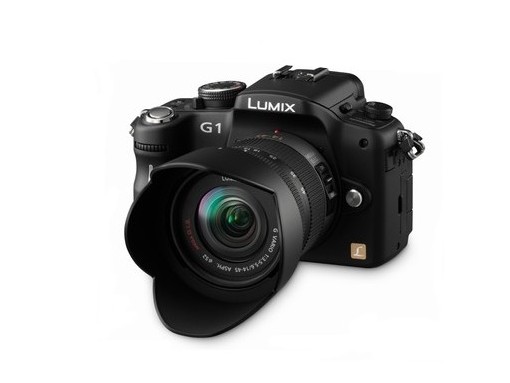Panasonic unveils the Micro Four Thirds Lumix DMC-G1
All the features of a DSLR in a fun-size package

After announcing to the camera world that it has the potential to shrink the somewhat unwieldy DSLR, with the arrival of the Micro Four Thirds System, Panasonic has unveiled the first camera in the world to use this technology.
Called the Lumix DMC-G1, the camera is just over 5in wide and is built around a 12.1 megapixel sensor.
The camera houses a full-time Live View Finder, so all shot composition is done through the 3in LCD or electronic viewfinder.
Slight in size
Even though it's a tad smaller than your average DSLR, all the features you have come to expect from a prosumer cam are here. This is because Panasonic has created a new imaging engine, Venus Engine HD.
This gives the camera a 23-area auto focus system that also supports user-selectable single-area AF, continuous focus tracking, and multiple face detection.
In fact, the G1 is a bit of an all-round detective, boasting Shake Detection, Motion Detection, Light Detection, Scene Detection and Subject Detection.
Get daily insight, inspiration and deals in your inbox
Sign up for breaking news, reviews, opinion, top tech deals, and more.
For the fashion-conscious, the Lumix DMC-G1 is available in a multitude of colours, including red, blue and black.
New lenses
To go alongside its new micro DSLR, Panasonic has also announced two new lenses: the LUMIX G VARIO 14-45mm/F3.5-5.6 ASPH./MEGA OIS which is suitable for a wide range of scenes from portrait to landscape photography and has a minimum focus distance of 30cm.
The second lens is the LUMIX G VARIO 45-200mm/F4.0-5.6/MEGA OIS – with built-in stabilisation. This lens will reduce camera shake and even make the tea if you are very, very lucky.
Those who are looking to invest in the G1 and don't want to get rid of their old lenses – do not fear! Old full-size Four Thirds System lenses will still work via an adaptor.
Although pricing on all these goodies is yet to be announced, expect them in the shops by November.
Marc Chacksfield is the Editor In Chief, Shortlist.com at DC Thomson. He started out life as a movie writer for numerous (now defunct) magazines and soon found himself online - editing a gaggle of gadget sites, including TechRadar, Digital Camera World and Tom's Guide UK. At Shortlist you'll find him mostly writing about movies and tech, so no change there then.
